Roundtable: How Can the Globalized Art World Transform to Tackle the Climate Crisis?
A conversation between artists and gallerists about how the art industry can—and must—radically adapt to the realities of a rapidly changing climate.
Moderated by Kate Brown.
If there has been one silver-lining in a year marred by difficulties, it would be that the pandemic has helped usher in a long-delayed reckoning with our climate emergency. As the world ground to a stop, artists and dealers were among those who have had to discover new ways of engaging with audiences when travel and movement are limited—with that lies an opportunity to reassess the traditional ways of doing business, which, it has become increasingly clear, are far from sustainable. But what does carbon reduction really mean? What does it actually entail? The founding of the Gallery Climate Coalition (GCC) last year—an initiative that has now extended to Berlin—hopes to streamline answers to these large questions, and make the transition to sustainable business practices less wooly and daunting for institutions, art shippers, gallerists, artists’ studios, and art fairs.
London gallerist Kate MacGarry, a founding member of the UK chapter of the GCC, has been vocal about the need to take real steps towards carbon reduction. And Berlin-based dealer Jennifer Chert of Galerie ChertLüdde has been part of the spearheading of Berlin’s GCC chapter, which launched this month. The two gallerists came together with London-based artistic duo Cooking Sections (Alon Schwabe and Daniel Fernández Pascua), and Berlin-based conceptual artist Andreas Greiner to consider the incumbent trends, how to embed environmentalism in daily life, and why one shouldn’t assume that carbon offsetting is going to fix anything.
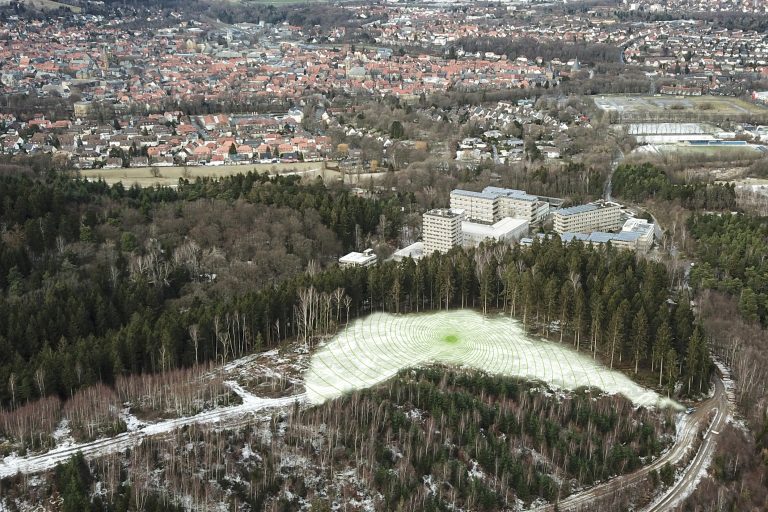
Andreas Greiner, view onto the initial planting area of ‘waldfuermorgen’ on the town’s edge, Goslar in January 2020
Photo: Johannes Förster
© VG Bild-Kunst, Bonn 2021
Kate Brown
Alon and Daniel, could you tell me how and when you first became embedded with ecological thinking—was there a distinct moment that it became part of your practice?
Cooking Sections
It’s something that has been part of our thinking and life in many ways for quite a long time. The first project we did was around an island community called Kivalina in the northwest of Alaska, which is considered to be the first climate refugee community in North America. They are well known for suing the 24 biggest oil and gas companies in the early 2000s to hold them accountable for the harms inflicted on their community because of climate change. That was a moment that opened a certain conversation that has been really shaping our practice. From then on, we studied food and the disruption of seasons due to climate events as a way to understand the transformation of ecological practices and power structures in different parts of the world.
Kate Brown
Andreas, what about you?
Andreas Greiner
I have always been somewhat aware of ecology and my impact as well. It really struck me as an artist, though in 2016, after I had returned from extended air travel around the world. I then had my first big exhibition at a museum where I was showing this large skeleton of a broiler chicken—the narrative around the work was about problematizing meat consumption and ecology. I had to give many interviews about this and, suddenly, this public image that I had created was haunting me, because I felt like I was a huge contradiction. I was standing there publicly for certain ideas, but in my actual practice, I was contradicting it. Out of this discomfort, I started to think about how I could change my patterns and act in a better way.
Kate Brown
Kate, you were on a much-talked about panel at Art Basel in 2019 that explored climate questions looming over the art industry. Was that the year that it struck you? When did this become a part of your considerations as a dealer?
Kate MacGarry
The concern has always been there in the background, but I hadn’t done much about it, to be honest. In the last several years, it became clearer to me that we’re dealing with a crisis. So I began trying to reduce the gallery’s footprint. Starting to become aware of all the travel we do in the art business really changed my view. That talk at Art Basel was the first time I had spoken about it publicly in any way. Last year, we founded the Gallery Climate Coalition (GCC) in London, which has been a great vehicle to commit to sustainability while joining up with colleagues to do things together. We are trying to change the culture with the way we work and expectations on us.
Kate Brown
What about you, Jennifer?
Jennifer Chert
I share this sense of discomfort Andreas was talking about… Even a bit of shame, too. This talk at Art Basel that you just brought up was the moment that I stopped feeling only overwhelmed by the problem. Before that, I felt that I was not even entitled to actually address the issues, so the fact that some colleagues were coming out and starting to talk about it in a place like an art fair, where the problem is so visible, was encouraging. That same year at Frieze, there were further talks on the subject of sustainability and the fair hosted a talk around the book launch of This is Not a Drill by Extinction Rebellion.
Those events helped me understand how our embeddedness with this problem meant that we had the responsibility to start to become more aware and vocal about it, and to try and see what we could do about it, which eventually led to co-founding the GCC chapter in Berlin, which launches this month. We will be offering environmental information and resources for Germany-based art organisations and professionals. The aim is to collectively find sustainable solutions for the art world. The GCC website is available for everyone to access, but this Berlin-specific website will additionally offer a forum and sections devoted to local information. For example, members can post information about art shipments with the aim to consolidate more. We offer resource-sharing, where exhibitions displays, art materials, and tech can be reused. This platform is about being less competitive and more collaborative.
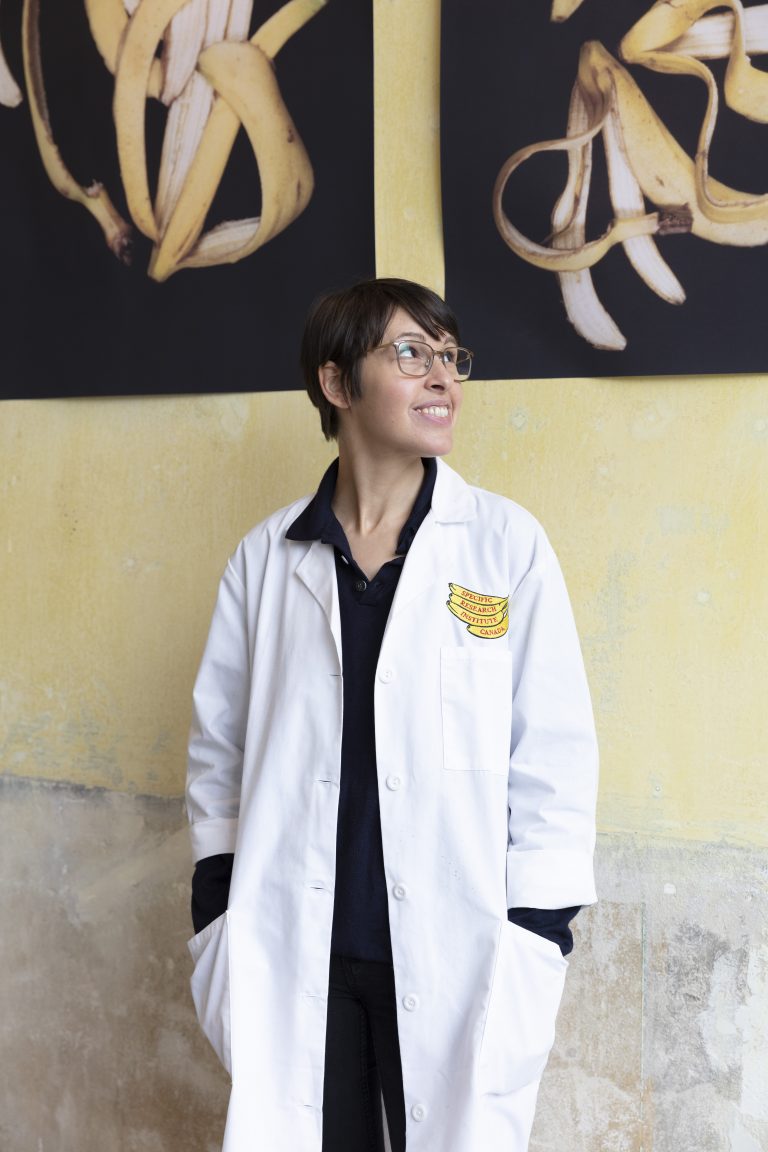
Jennifer Chert
Photo: Andrea Rossetti, Berlin
Kate Brown
Alon and Daniel, you have been doing a lot of work on these issues. You recently opened a major project at the Tate. Why do you choose to use these spaces for these conversations?
Cooking Sections
We ask ourselves how we can transform institutions and implant these ecological infrastructures into them. Our practice is extremely site-specific and responsive to each place it is in. A lot of the work is produced wherever it is shown. As such, it is meant to have a life that is longer than the duration of the exhibition. It is a kind of challenge and very much about asking how to shift the responsibility onto institutions and not individuals.
For us, the guilt trip that we’re all made to kind of feel is part of the problem. We’re just being made to become consumers of new kinds of products, like carbon offsetting, for instance. We have to think about this in a very different way to make the radical shift that will change the system—and not only try to improve the way we work within this current system.
Kate Brown
A lot of the conversation around climate change is about how to continue with growth while reducing global warming—carbon offsetting is the go-to method. Someone can buy credits to basically negate their energy consumption.
Kate MacGarry
In terms of offsetting, we’ve been having a lot of discussions about this at the GCC. We have been encouraged by our environmental advisor, Danny Chivers, not to use the word “offsetting” because it’s a flawed principle. There are so many cheap offsetting schemes. Ultimately, offsetting is a last case scenario option that comes after one has reduced their carbon footprint—the emphasis should be on reducing.
Cooking Sections
Part of a project we have been working on since we launched it at Performa in New York is called “Offsetted” and we are now working on an adjacent book that is about to be published in a few months. We claim that “the offsetted” is a new social class of people that has been displaced by carbon offsetting operations to mitigate the extractive production and consumption infrastructures in the Global North. There is an obligation on the Global South to cleanse our pollution. This has led to a number of carbon offset plantations in countries like Mozambique and Angola, for example. As a result, these places have been displacing people in order to make space for carbon offset forests for the Global North. For us, one of the challenges is that all these carbon calculations leave out many factors in the equation—like social values, which are impossible to calculate. How do we move beyond carbon to other parameters that cannot be quantifiable? The quantification perhaps is part of the problem.
Cooking Sections
Chemicals [like pesticides and herbicides] in food are an example of effects that are escaping these carbon calculations. When it comes to mega agricultural businesses, it’s not just about carbon—there are all these other particles that we’re ingesting—or they are ingesting us. Trying to include them into these ecological discussions is a challenge.
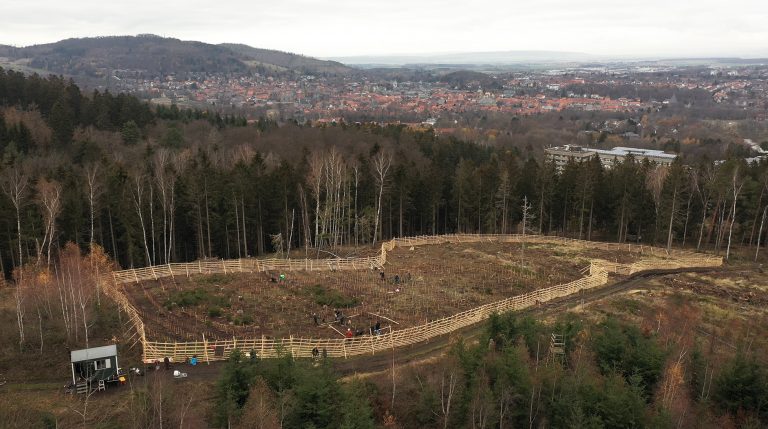
Andreas Greiner, view onto the initial planting area of ‘waldfuermorgen’ on the town’s edge, Goslar in fall 2020
Photo: Paul Rohlfs/Studio Förster
© VG Bild-Kunst, Bonn 2021
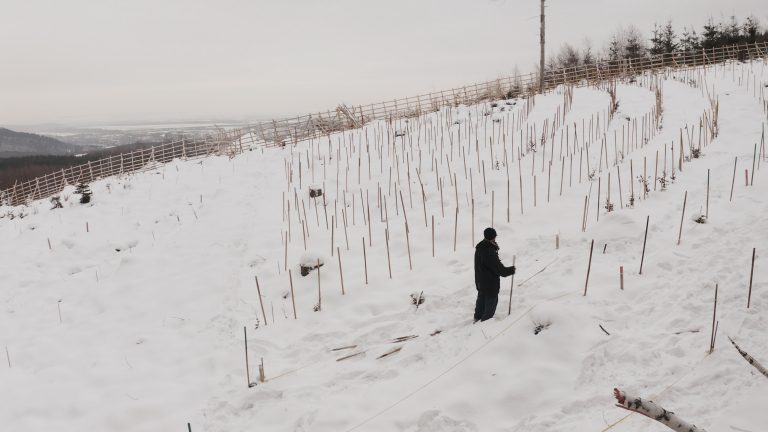
Andreas Greiner, Markings of the spiral planting pattern for the upcoming planting season in spring, Goslar in January 2021
Photo: Paul Rohlfs/Studio Förster
© VG Bild-Kunst, Bonn 2021
Kate Brown
Andreas, you made a recent work where you addressed how random some of these numbers churned out by carbon offset calculators are.
Andreas Greiner
It’s an industry. If you go to the carbon footprint calculator of the airline company Lufthansa, you get a completely different result than if you go to a carbon footprint calculator, like Atmosfair or another highly ecologically-motivated platform. It’s very abstract and it’s difficult to find out what happens with this money that you throw into carbon compensation. I was always insecure about which platform to invest in, and I ultimately decided that I would plant trees myself. Planting trees is a very fulfilling practice. I wouldn’t put it offsetting off the list entirely because it’s still good, but you have to be very conscious of how. If the GCC is offering it, there needs to be some serious research going into which programs are being funded with the offset.
Kate MacGarry
We have recommended one charity that we found. There are several of them, but one that we found really good is Client Earth. They are shutting down coal power stations. The difference they can make immediately to reducing carbon is just incredible. They take governments and oil companies to court and get them shut down.
Kate Brown
Christie’s and Hauser & Wirth separately announced last month that they were both going to become net-zero by 2030. Is it a wholly good transformation that these industry titans are doing this?
Kate MacGarry
If we don’t get these big parts of the art world changing, then we’re not really going to make much of a difference. We have to give them the benefit of the doubt as we all have to find standards that we are working towards. This is an incredibly confusing and terrifying subject. It’s very hard to get a grip on the numbers and that’s a main reason that we came together as the Gallery Climate Coalition—to try and get the numbers right.
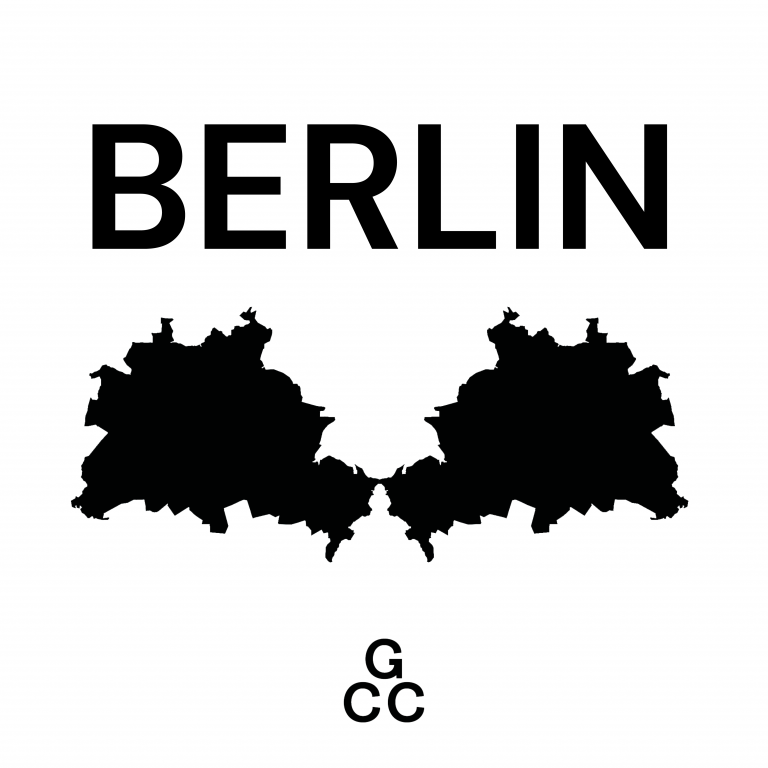
Berlin GCC logo
© GCC Berlin
Kate Brown
Is it something everyone can afford? How expensive is it to shrink a gallery’s footprint?
Jennifer Chert
It is most expensive in terms of time, probably. With the GCC, we are trying to establish a platform that helps our colleagues save time while reducing their carbon footprint. We have resources that are available there to make it clearer and easier. One issue we do not really touch on yet is the digital consumption of all our operations. We may not fly or do events or have transports, but our digital consumption is indeed huge, and also difficult to calculate. There are not so many tools available at the moment to, for example, calculate, the energy consumption of our talk right now.
Kate MacGarry
It’s cheaper for our gallery to fly less and go to fewer places. In terms of carbon, I did work out if I was to pay £100 per ton, it would only cost me £2,600 per year to balance the carbon emissions of the gallery, which is totally manageable.
Kate Brown
Andreas, you have done research into the digital carbon footprint of your artworks.
Andreas Greiner
I know when it comes to artificial intelligence, which was the hype before NFTs, emissions are huge. For a project that I was working on years ago, I had to use machine learning algorithms and we rented cloud computing devices that are often used with AI. The first time that I exhibited those works, the programmer I was working with asked me if I had ever thought about how much energy we were blasting through. We sat down and began to calculate the energy consumption of the graphic processing units we were working with. For that one show that I did, I realized I had reached a consumption of electricity that was close to 80 percent of what the average German would use in a year.
Kate Brown
How do you grow an art business and be a climate activist? Given the emphasis on degrowth as being crucial to slowing global warming, making profits and climate activism are somewhat at odds with each other, are they not?
Kate MacGarry
At the GCC, we set a target in line with the Paris Agreement. We didn’t want to put off all our colleagues by giving a really difficult target to reach. The Paris Agreement is a 50 percent reduction in 10 years and it is doable if you change the way you operate—if you start shipping by sea, for example. So, although the industry and carbon reduction do seem at odds, achievable targets and real actions taken to reduce are something we can and must do. And, if you want use offsetting, we suggest paying no less than £50 GBP per tonne of carbon, which is a lot more than you’ll find recommended in other places.
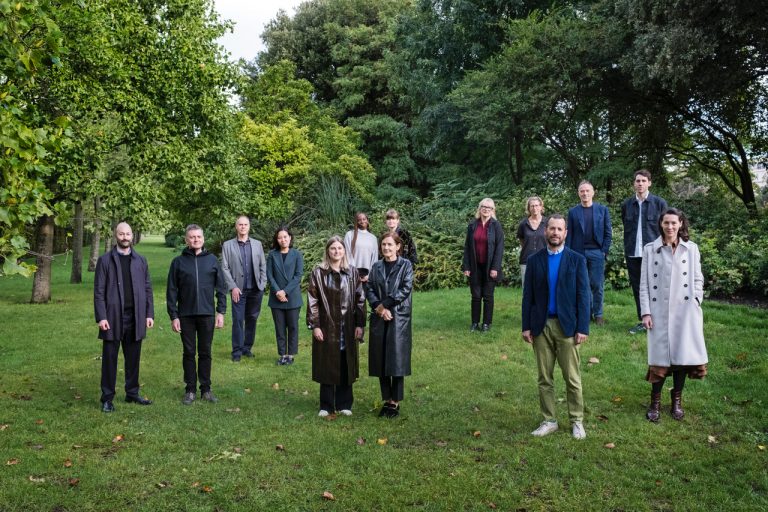
GCC Founding Committee in London. Courtesy Gallery Climate Coalition.
Kate Brown
One can and must face these data sets and consider the information from scientists, but storytelling through art is crucial to connecting people to this issue. How was your experience doing that, Alon and Daniel?
Cooking Sections
For us, it’s not just about putting the flag in the ground and saying something is wrong. It is actually more interesting to us to ask how we can transform a space and raise public awareness. So far, our current exhibition at the Tate has stirred a conversation that is adding more pressure on salmon producers in the country. It is holding them accountable due to this public discussion, which has been going on for years, but now it is also being discussed in a cultural context. It is very important to be angling it from all these different directions. It’s not a single path that one has to walk. We constantly have to be speaking from very different spaces and disciplines.
Kate Brown
On the note of angling, Jennifer, how does this topic come up with collectors? These are people who may have huge footprints via their business or lifestyles. Have they been reacting or incentivizing the shift?
Jennifer Chert
Like Cooking Sections said, it is important that we are looking at the problem from many different perspectives. It’s important that all the parts which are involved are working together, because my possibility of changing something depends on the action and the reaction of the other. So, in that sense, collectors are absolutely a very important part of this equation. And not only collectors, but also patrons and others who have the capability to influence. It’s very important to involve them. From my side, I have been up until now more concerned with trying to get the Berlin chapter of the GCC platform launched so that we can then approach people such as collectors.
Andreas Greiner
I have a question. Now it has been a year where all commercial routines of the art world have been broken in a quite radical way. There were no art fairs, less transportation, fewer flights taken by audiences and producers. There was this huge effort and culture of attempting to get into these expensive fairs around the world. Now it has fallen away. How was a year without a single analog art fair?
Kate MacGarry
We’ve survived. It’s been challenging going online. It’s also been a real eye opener. We survived without all these events. It just makes you realize what a hamster wheel we were on. I will go back to normality with a real reticence. I’d already committed before COVID to not flying work around the world to art fairs any more—that’s just done. I don’t know about you, Jennifer, but I don’t want it to be the same and I also don’t want to lose everything—we’ve got to find a balance.
Jennifer Chert
I feel similarly. There’s definitely a lot of space for reflection, but committing to, for example, doing art fairs that you can reach by train or in another more sustainable way is one important change in behavior. At the same time, we need to leave some space and trust in the art fairs, because they’re also moving in new directions.
Kate Brown
Jennifer and Kate, how does it work with regards to your gallery programs? A lot of the important work of the GCC deals with the nuts and bolts of carbon footprints. How are you talking with your artists about this? Are artists in your program engaging with the topic conceptually?
Kate MacGarry
It’s part of the whole picture. It’s more conversations to have. Of course, artists have already been interested in these issues, as Daniel, Alon, and Andreas have for many years. Marcus Coates is particularly invested in the subject. Again, anyone who reads the newspaper now is aware of what’s going on. It’s very interesting two years ago that you, Kate, were at Art Basel asking if works engaged with the environment and you were getting nothing but “nos.” There’s always been a stigma around work that is about the environment. It was an area that wasn’t taken seriously.
Jennifer Chert
I don’t like to think about this as ecology, but also in terms of a broader sense of sustainability. That goes into so many different levels and it does not necessarily mean you do different things, but it means that you do the thing you do differently. The big change for me has been becoming preoccupied with these thematics in a certain sense. And then, it reflects in everything you do.
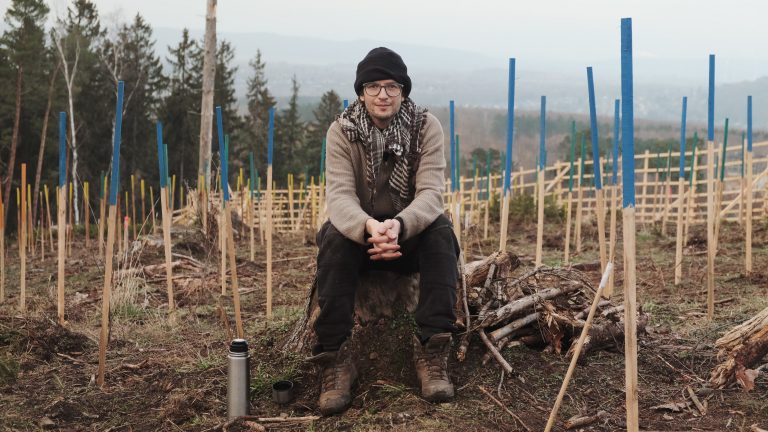
Andreas Greiner, at the planting area of ‘waldfuermorgen’, fall 2020
Photo: Paul Rohlfs/Studio Förster
© VG Bild-Kunst, Bonn 2021
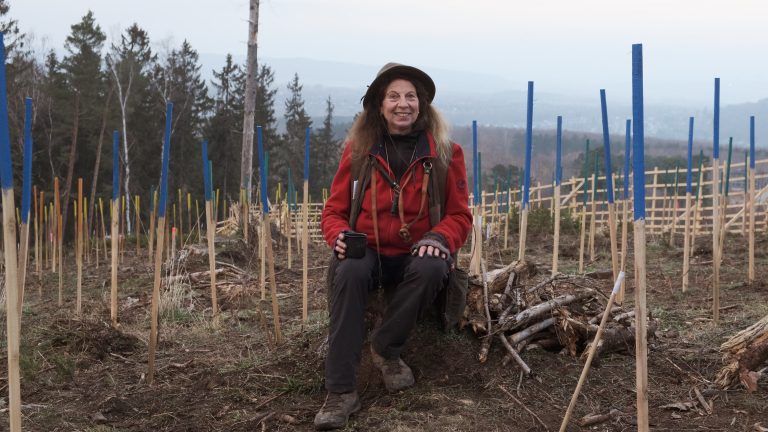
Gertrude Endejan-Gremse, at the planting area of ‘waldfuermorgen’, fall 2020
Photo: Paul Rohlfs/Studio Förster
© VG Bild-Kunst, Bonn 2021
Kate Brown
Daniel and Alon, or Andrea, did you ever find that people were resistant to the subject matter?
Cooking Sections
The spaces that we are moving through are very specific. Where our work circulates and is exhibited, and where we participate is a section of the larger art world and cultural sphere that is in general very conducive to and inclined towards these questions. We have not met much resistance, but we have never tried to knock on the doors of Art Basel and asked to be part of it. It’s not relevant to our work.
Andreas Greiner
If I now ask about reducing the site waste of an exhibition, there is more openness now than maybe three or four years ago. Then, everybody would respond, “if you don’t want to, you don’t have to be part of this exhibition.” When it comes to climate discussion and alternative thinking, there’s now a more welcoming attitude.
Kate Brown
This enforced pause has been an opportunity to reset. Andreas and Daniel and Alon, I’m assuming that you also did fewer exhibitions and traveled less. How do you plan to restart when the rest of the world does?
Cooking Sections
It is a good question. I don’t think we’ve been working less during the pandemic— we might have been working more. Since we often do on-site research via multi-year processes, our work has not been so affected and we were able to have research assistants carry out parts of the work that we could not because we’re not able to travel. It has been an experiment and a test to see to what extent things can be done remotely.
Moving forward after this pandemic, we need to be cautious. Ecology is a much more complex and encompasses larger questions than transportation and movements around the world. Having ecological networks and working to foster environments is something very important. That is much larger than asking, “Is it fine or not to get on that plane?” This is for me the question is rather: how do we make these forms speak to ecology? There’s a way to practice ecology within the culture and within the art world. We just need to be careful not to be too reductive around these issues.
Jennifer Chert
I totally agree with this, because it also goes back to what we were saying before about pointing the finger and the responsibility on the individual when what we actually need is systematic change.
Andreas Greiner
The question of whether to personally get on a plane or not is a relevant question. Besides the systemic and societal footprint, we do have our individual footprint. Taking an airplane can enhance our personal footprint by much more than we think. A round trip from Berlin to New York requires around two tons of carbon dioxide—this is already far more than 1.5 tons, our yearly budget per person if we want to stick to a 1.5 degree planetary warming goal.
We should invent a culture of celebrating when we have managed to reduce or act consciously. Any new models we create, we should celebrate and it should be fun to do things that are moving towards a new kind of behavior. One of the strongest tools to change systemic actions are cultural tools. How do we behave? Our own actions also are highly relevant in shaping the future. It is not only the big industries.
Cooking Sections
There are subsidies to the fossil fuel industry. There could be subsidies to pollute less in air transportation. Why are planes from the 1980s still flying around? The question is rather why are governments not investing in reducing the footprint of airplanes themselves rather than stigmatizing the act of connecting to other parts of the world?
Kate MacGarry
I agree. We see ourselves in the art world as very international and a culture of sharing ideas. Travel and movement is an essential part of that. But if we vote with our feet, change may come.
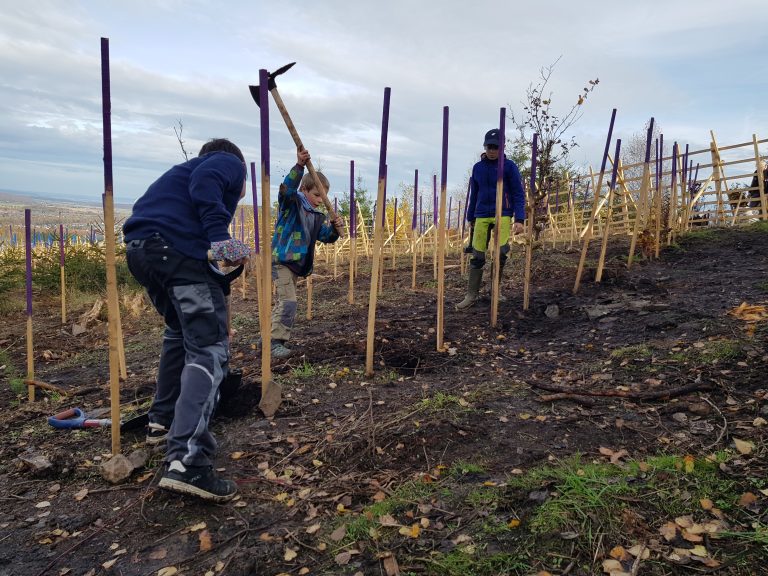
Children their trees, Goslar in autumn 2020
Photo: Andreas Greiner
© VG Bild-Kunst, Bonn 2021
